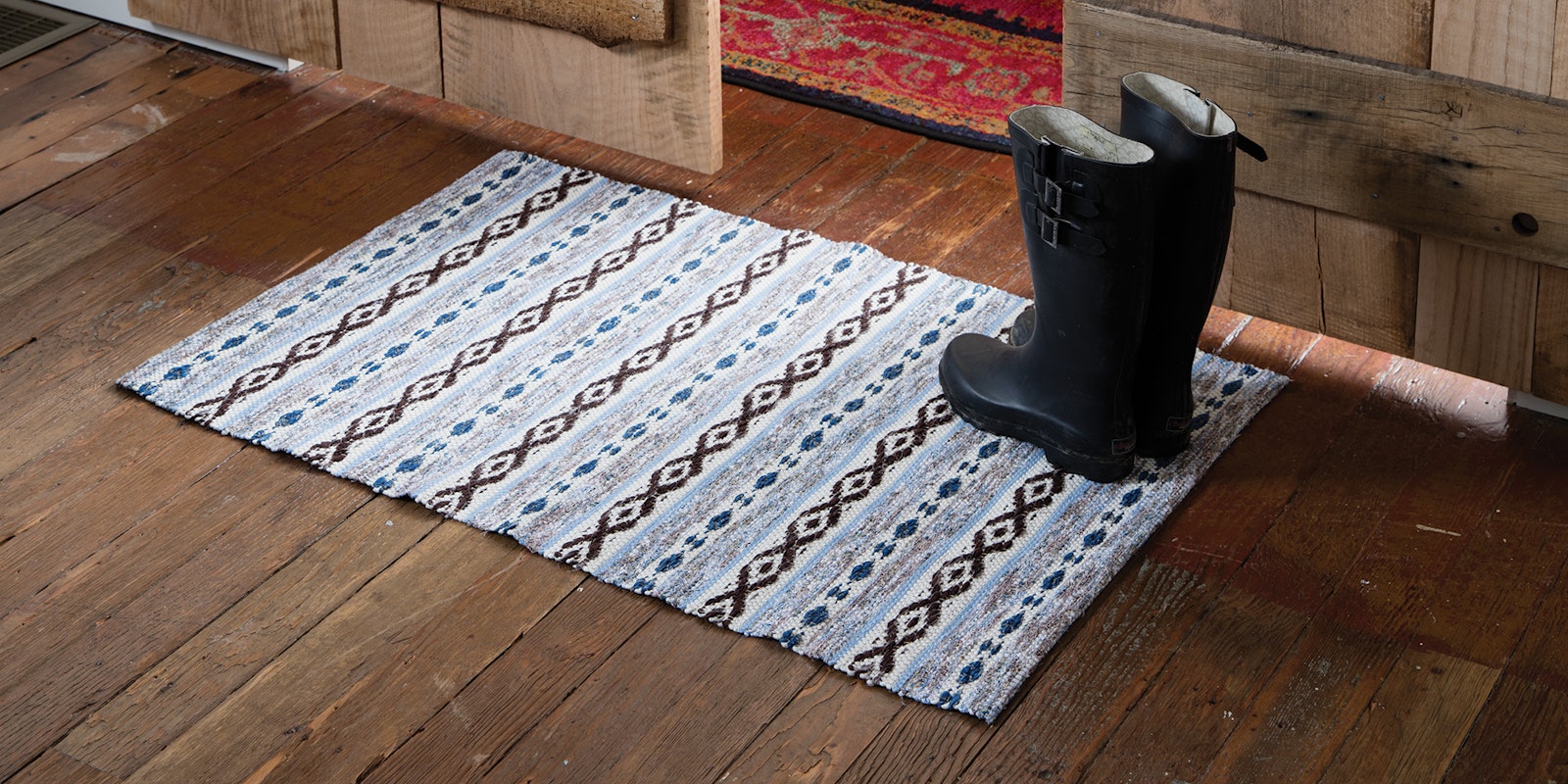Boundweave is an entrancing structure. With a relatively simple threading, often on just four shafts, you can create beautiful, weft-faced cloth perfect for cozy rugs, wall hangings, and many other household items. Whether done in traditional Scandinavian colors, or using a more contemporary palette, boundweave is a classic structure that is always in style. Lynn Schuster, past Handwoven contributor and talented weaver shares some of her advice for weaving boundweave. – Christina
I began weaving boundweave rugs in 1993. I was inspired by an article I saw in Handwoven magazine (I don’t have a copy of it anymore so I can’t recall the issue)...but, I remember the feeling! There it was, the most beautiful boundweave rug that I had ever seen...Threaded in a four-harness Rosepath were “diamond” and “flame” motifs surrounded by solid colors. The colors combined with the patterns popped; this rug had so much life! I had no idea how it was woven, I just knew that I was going to figure it out.
I studied the article with enthusiasm, wonder, and some confusion. I was determined, so I decided to thread my loom and create a draft according to the directions in the article. My first rug was very similar to the rug in the photograph. While creating the design for my rug, I could not fathom how it was going to come to life on the loom, but it did. Since then, I have woven many boundweave Rosepath rugs. I have learned so much along the way and I am thrilled to be able to share some of my observations with you.
When weaving boundweave, there must be some color contrast in order for the pattern to show.
Boundweave is a weft-faced structure. I set my rugs at 4 ends per inch. Because the threads are sett wide, the weft can fill in the spaces and cover the warp completely. Since the warp is covered completely, there is no interaction of color between warp and weft, so the weft colors appear exactly as they do when looking at the skein.
Contrasting Color with Pattern
Any colors can be put together as long as they are of the same value (degree of lightness or darkness). Having a consistent value level among several colors unites them into a group, which then can be treated as a single entity. Using several colors of the same value creates harmony. When I am choosing colors for an even weave, where both warp and weft will show and interact with each other, I test the colors by taking a single yarn of all the colors I am thinking of using and I twist them together. If I am twisting dark colors and light colors together, the colors separate from each other, creating contrast. By becoming aware of color values, I can create fabrics that have fewer surprises when interlaced at the loom.
For boundweave, I must have some contrast in order for the pattern to show. Because Rosepath is a weave structure threaded and woven on a pointed draw, it is possible to weave flame and diamond motifs. The motifs will fade away or become very subtle if the colors next to each other are the same value.
Contrasts must be kept in balance. Moments of solitude and moments of sociability. Moments of excitement and moments of peace. Too much of any of these is too much of a good thing. To showcase a color, I may use it sparingly and next to colors of contrast.
Color contrast is wide open to anyone’s imagination. Sometimes I contrast warm colors with cool ones, clear colors with muddy colors, light colors with dark colors.
Likewise, the visual design is as important as color theory. Design and pattern need to be in balance as much as color to maintain liveliness. Overstimulation or too much pattern can leave one with a feeling of confusion.
Size contrast can be introduced by unevenly dividing spaces. Make a wide pattern area with a narrow strip of solid color or a narrow border of pattern in a wider field of solid color.
An excellent source for viewing color and pattern can be found in nature. The vertical lines of the trees in contrast with the horizontal line of the lake surface. The color contrast between water and trees. A sunny, bright day in contrast with a dark, ominous stormy day. Get creative and have fun!
Lynn Schuster
Posted March 11, 2015. Updated November 10, 2017.


